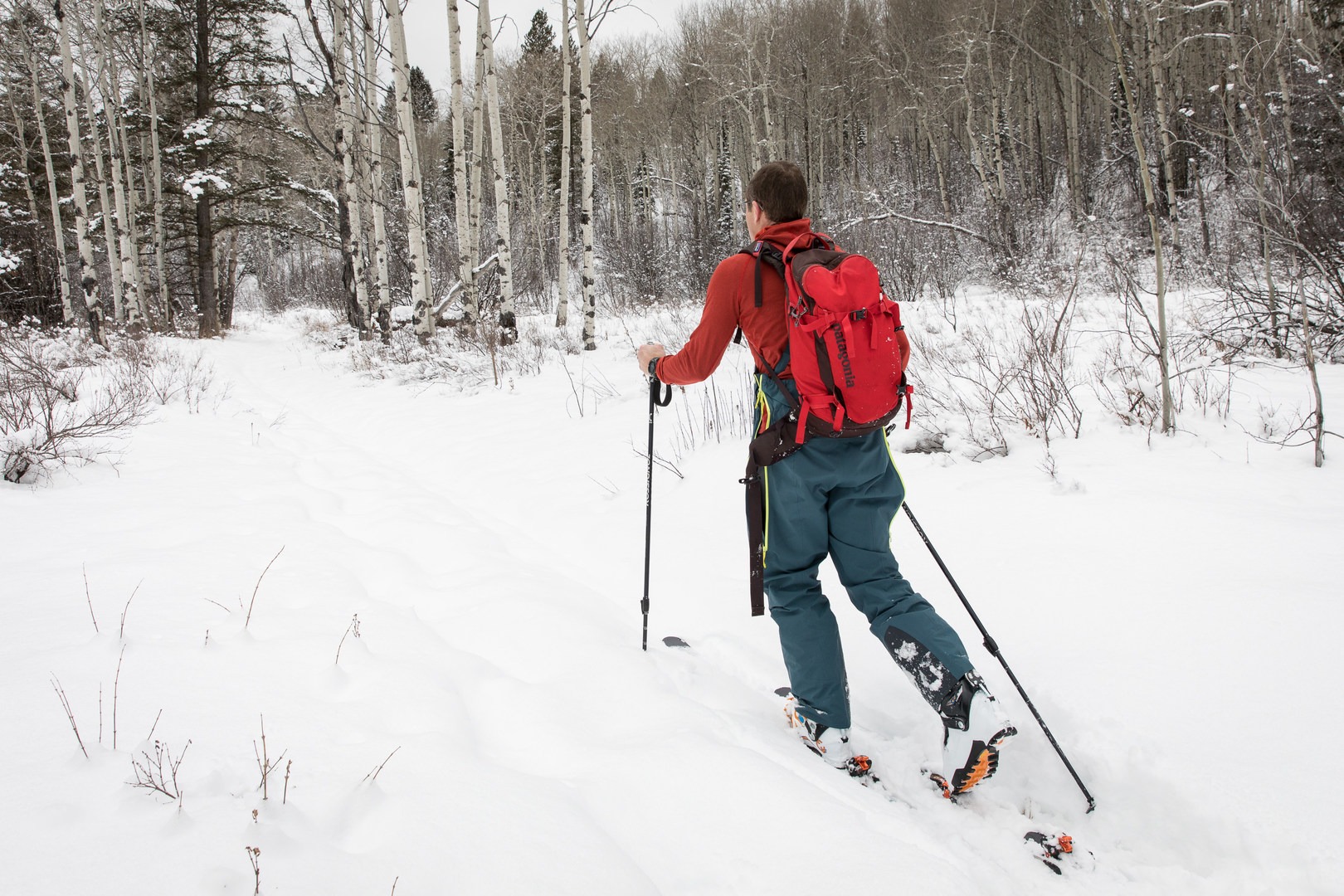Idaho’s Teton Valley is a big departure from the business and tourism of Jackson, Wyoming, which is just an hour’s drive over Teton Pass. Known as “The quiet side of the Tetons,” Teton Valley is a great base to discover amazing views of this iconic range without the crowds. And if you really want to get away, turn your attention toward the Big Hole Mountains, which form the valley’s western edge. Remote, beautiful, and comparatively lightly used, the Big Holes hold a trove of trails and backcountry for anyone willing to make the trek out.
I chose to ski a pack trail leading up Mahogany Creek for just such a trip. This simple trail was once a pack trail that followed Mahogany Creek toward its north and south fork split and farther back into the Big Holes; recently it has seen an upswing in use from mountain bikers, as have many other trails in this range. In winter, however, you’re likely to be the only person on this gradual, scenic trail. The route begins where a Forest Service road ends, crossing over Mahogany Creek before climbing slightly through meadows and up into the treed south-facing hill above the creek. The trail provides great views down into the riparian zone that is popular with local wildlife. The steep drainages in this area provide plenty of habitat variety and high and low ground for elk, deer, and moose, and if you aren’t lucky enough to spot an animal from the vantage of the trail, you’re sure to see tracks.
I chose to wear the Casio Pro Trek Smart as a tool to help me monitor my activity as I pushed into the drainage. Because the trail is clearly defined both on the ground as it follows Mahogany Creek up to its forks and on maps and GPS, navigation wasn’t really a concern. Instead, I used the Casio Pro Trek Smart to keep track of my distance and average speed, both of which are accurately tracked by the watch’s GPS system. The watch allows users to track their active time along with their rest time and to establish trip goals based on elevation or distance. I’m not a fan of heart rate monitors, so the fact that the Pro Trek Smart doesn’t offer this feature isn’t a game changer for me. Instead, I like to track my progress by the terrain and the time it takes to cover ground. The Casio Pro Trek Smart is a great fit for that purpose: The GPS lets you know where you stand (or ski), and the activity monitor keeps track of how you got there. The watch also constantly relays helpful information about altitude and barometric pressure, which rose steadily over the course of the day as a forecasted high pressure system moved in and the clouds began to lift. Sunrise, sunset, and moon phase information are also on display, which can be helpful if you are trying to spot or track wildlife.
After the ski back, I was able to directly load all of the trip details to my Google Drive. The watch has four gigabytes of internal storage, so you may not really need to utilize these services, but if you want to share your trip stats and track, the Casio Pro Trek Smart can directly export a KML file to the Google Drive account that is linked to the watch on set-up. From there it is simply a matter of opening that file with software that can read KMZ or KML files to see your track, distance, and elevation information on your desktop, laptop, or mobile device.





Comments
Sign In and share them.